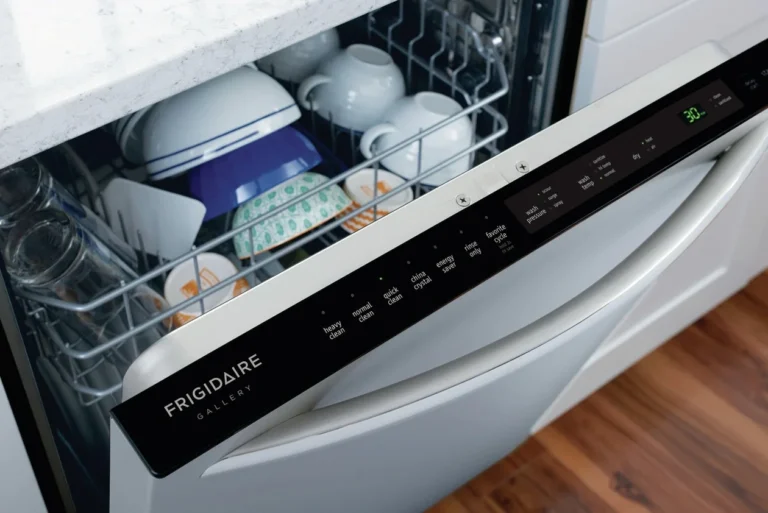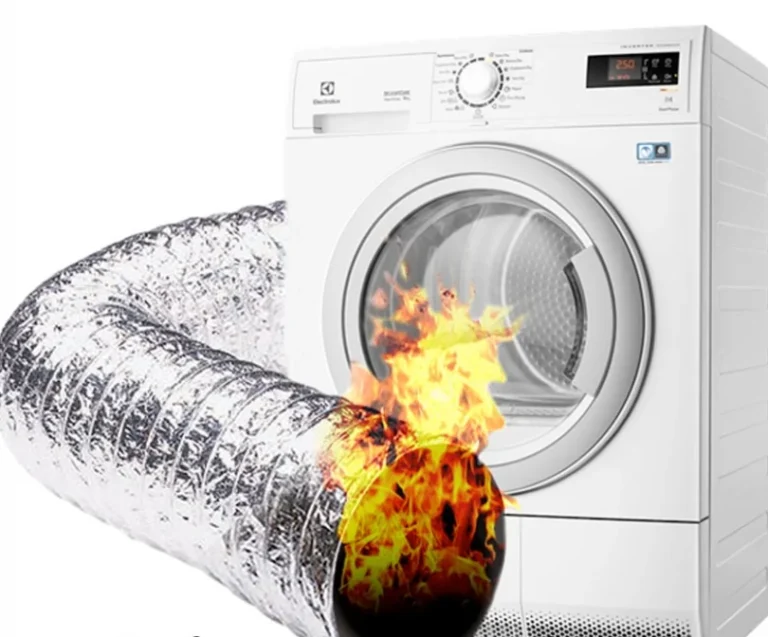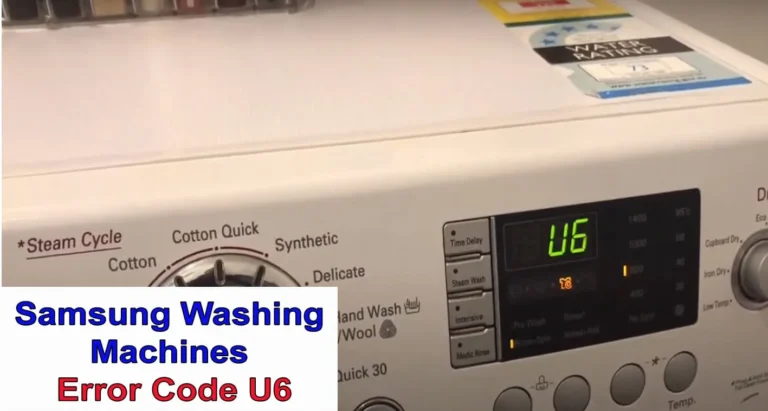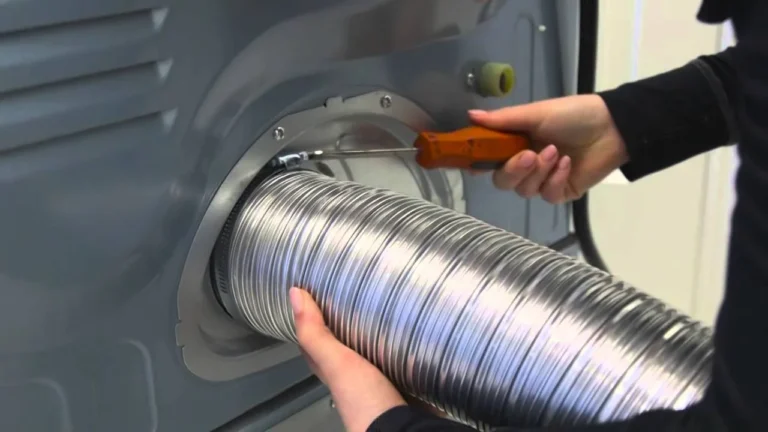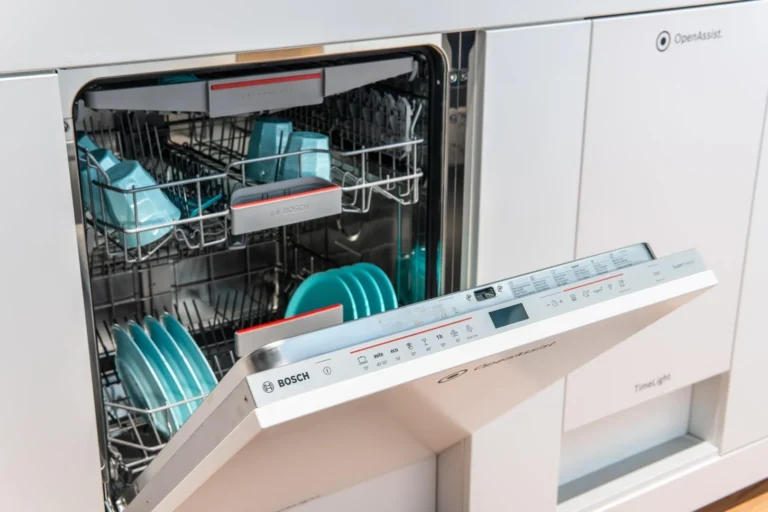The Culprits Behind Washing Machine Residue (And How To Stop It)

It’s a common laundry dilemma – you excitedly remove a load from the washing machine only to discover your darks are covered in mysterious white specks or your lights have a blue-green tinge. Where did this strange residue come from and how do you get rid of it?
Washing machine residue stems from several causes but can be fixed with some adjustments to your laundry routine. Read on to uncover the reasons residue clings to clothes and learn tips to stop it in its tracks.
What Causes Washing Machine Residue?
Residue on freshly laundered clothes comes in different forms depending on the culprit. Here are some of the most common causes of washing machine residue:
Undissolved Detergent
Using too much detergent is a prime cause of white residue or specks on darker items. Modern washing machines use much less water than older models, so detergent dissolves less efficiently. Excess powder gets trapped in clothes instead of dissolving fully in the wash cycle.
Powder detergent is the biggest culprit as the granules don’t break down as readily in low volumes of water. Liquid detergents are formulated specifically for high-efficiency machines and dissolve more easily.
Dirty Washing Machine
It seems counterintuitive, but your washing machine itself could be the root of residue issues. Detergent, fabric softener, and soils build up inside the machine over time. As clothes rub against dirty surfaces, residue transfers onto the fabric.
Front-loading high-efficiency (HE) washing machines are particularly prone to build-up due to low water use and air-tight seals. If soil isn’t cleaned regularly it migrates onto clothes. Standard top-loading machines also need occasional deep cleaning.
Hard Water
Water hardness varies across regions, but areas with hard water face unique laundry challenges. The high mineral content of hard water makes it difficult for detergent to lather and rinse away properly.
As a result, detergent, soil, and minerals deposit onto fabric surfaces and leave a residue. The residue is especially noticeable on darker clothes.
Excessive Lint
Lint and residue build-up are interconnected issues. As lint accumulates it sticks to detergent and soils, creating clumps that transfer back to clothes.
Frequent lint filter cleaning helps reduce build-up. But over time, residue still collects inside the drum and along input lines. This gets shaken loose during the wash cycle and leaves lint and detergent specks behind.
Using Non-HE Detergent
High-efficiency washing machines require specially formulated low-sudsing detergents. Regular detergents create excessive suds that HE machines can’t properly rinse away.
Left behind, these suds turn into noticeable white residue. Always check that your detergent bottle is marked as HE compatible before using it.
Skipping Clean Washer Cycles
Most washing machines have a special cycle designed to clean inside components and flush away build-up. This cycle should be run once a month or based on your machine’s recommendations.
If the washer isn’t cleaned regularly, oils, soils and detergent accumulate until clothes start collecting residue. Think of it like forgetting to scrub your shower for months – grime builds up!
Cold Water Wash Problems
To save energy, most laundry is done with cold water. But if the cold cycle isn’t reaching the right temperature your detergent won’t activate fully.
Ideally, cold water cycles should reach 15°C-27°C (60°F – 80°F). If the temperature is too low, you’ll be left with detergent residue clinging to fabric.
How To Get Rid of Washing Machine Residue
Once you know what’s causing residue, it’s time to start resolving the issue. Try these tips to get your laundry back to normal:
Adjust Your Detergent
The first thing to try is cutting back on the amount of detergent used per load. Follow the dosage directions on the bottle based on your load size and soil level.
Stick to liquid detergents or detergent pods/strips if possible, as these dissolve more efficiently in HE machines. If using powder detergent, allow it to fully dissolve in water before adding clothes.
Clean the Machine
Give your washer a deep clean at least once monthly. Start by running a hot wash cycle on the clean washer setting – many machines have a dedicated cycle for this. If yours doesn’t, run a hot cycle with two cups of white vinegar which helps break down residue.
Every few months, clean the detergent dispenser and inside door seal with an old toothbrush and hot soapy water. Remove visible lint from the drum. Affresh and other washer cleaning products also help remove built-up grime.
Install a Water Softener
In hard water areas, a whole house water softener is the best solution for eliminating mineral residue. These systems remove calcium and magnesium ions that make water “hard”.
Laundry additives can help as a temporary fix. Add 1⁄2 cup of borax or washing soda to the wash cycle to prevent hardness minerals from depositing on clothes.
Wipe Out Lint
Get into the habit of quickly wiping down the lint filter and lint-prone crevices around the door seal before each load. This takes just seconds but prevents loose lint from latching onto fabrics.
For a deeper clean, detach the lint filter housing once a month and wash out any compacted lint lurking behind the screen. Refer to your machine’s manual for how to fully detach and reassemble components.
Use Proper Detergent
Always check that your detergent is marked as HE-compatible before adding it to an energy efficient front or top loading washing machine. Non-HE detergents oversuds and deposit residue.
Look for the HE logo or check labels for mentions of high-efficiency machines. Avoid detergents listing bubble-boosting ingredients.
Run a Rinse Cycle
If your clothes already have built-up residue, try running them through a rinse cycle before drying. Choose a high water level and cold temperature. The agitation helps dissolve detergent while the cold prevents it from setting in.
Adding white vinegar helps dissolve stubborn residue during the rinse cycle. Just don’t add it directly to the drum as this could damage the machine.
Air Dry Items
The heat of machine drying can set stains and residue into fabric. For bad residue cases, air dry laundered clothes on a rack or line. This prevents further bonding while giving detergent and minerals time to fully dissipate.
Check clothes once fully dried – residue may dissolve after getting wet again in the wash but air drying. If not, launder again focusing on proper detergent, water temperature and machine cleaning.
Scrub Tough Residue
For isolated spots of stubborn residue, try gently scrubbing with a soft bristle cleaning brush. Fill a spray bottle with equal parts vinegar and cool water. Lightly spray the stain then brush gently to help dissolve residue without damaging the fabric.
For heavier stains, make a paste from washing soda or borax and scrub. Rinse the fabric well afterward and wash normally. Avoid harshly scrubbing delicate materials.
Wash Problematic Items Separately
If certain fabrics consistently attract residue in the washing machine, try washing them separately. Washing can trap residue loosened from one item onto others in the load.
Wash lint-prone fabrics like towels and fleece jackets by themselves. For delicates prone to detergent build-up, use a lingerie wash bag.
Replace Damaged Door Seals
Worn or damaged door seals allow moisture and residue to spread to places inside the machine. If the seal is visibly cracked or torn, replacement seals can be purchased online or from an appliance parts store.
Watch a tutorial to learn how to remove your model’s door seal. Then follow instructions to attach the new seal securely before running loads again.
Upgrade Your Machine
In some cases, residue and performance won’t improve without an appliance upgrade. Older washing machines often lack cycles and materials needed to prevent build-up issues.
If you’ve tried the above steps without success, it may be time to upgrade to a new high-efficiency front or top loading washing machine. Features like stainless steel drums and sanitization modes also help reduce residue.
When To Call A Washing Machine Repair Pro
While most residue is fixable with some DIY adjustments, you should call in a professional for:
- Visible mold growth on the door seal or inside the machine – this indicates a moisture issue
- Rust formation on the drum or other interior parts
- Leaking water during wash cycles
- Strange noises like grinding or loud knocking
- Spinning problems or clothes remaining soaked after the rinse cycle
A repair technician can inspect all components, adjust or replace damaged parts, and ensure your washer is functioning optimally.
Proper Loading Techniques Help Reduce Residue
How you load the washing machine can contribute to residue issues if done improperly. Overloading causes clothes to clump together, preventing proper water and detergent circulation. Likewise, underloading allows clothes to tangle and trap lint and soil.
Follow your machine’s recommended load size based on weight. Spread clothes out evenly with space for water to flow through. Mix large and small items for balance. Load similar fabrics together since residue often transfers from one fabric to another. Delicates prone to residue should be loaded in a mesh wash bag.
Taking a bit of extra care while loading goes a long way towards efficient cleaning and residue reduction. Don’t just toss clothes in haphazardly. A properly loaded washer ensures no item is left with clung-on detergent or soils.
High-Risk Fabrics And Garments
While no fabric is immune to potential residue, some types require extra precautions. Synthetics like polyester and spandex have a high static charge that causes them to attract more lint and detergent. Delicate silks and wools are prone to damage and wear from residue build-up.
Towels, washcloths, and fleece are lint magnets. Residue easily gets trapped in theirloops and nap. Even 100% cotton t-shirts can experience residue due to their soft surface.
Garments with embellishments like embroidered designs, sequins, and beads warrant gentler washing as residue can become trapped around decorations. Anything heavily soiled before washing is also prone to residue remaining.
Laundry Product Ingredients To Avoid
Some laundry product ingredients contribute to residue more than others. Optical brighteners can leave a filmy residue from overuse. Harsh surfactants strip away protective textile finishes over time, allowing soils to cling.
Fragrance oils and skin softeners deposit a moisturizing residue. While they make clothes smell nice temporarily, the coating can discolor over time. Fabric softener sheets in particular leave a coating on dryer machinery and clothes.
When shopping for laundry products, choose plant-based, fragrance-free options with minimal ingredients. Look for “free and clear” on the label with no added perfumes, dyes or skin softeners. And skip the fabric softener entirely – it’s an optional product despite popular belief.
Maintenance For Washing Machines Prone To Residue
Front-loading high efficiency models require the most stringent maintenance to avoid residue woes. Their air-tight design, low water use, and retention of water between cycles creates an environment ripe for build-up.
Owners of front-loaders should religiously clean door seals, dispensers, and gaskets monthly. Remove soaked lint from the seal after each cycle. Periodically run tub cleaning cycles. Allow the drum interior dry fully between uses.
Top-loaders also need care, though not at stringent levels. Still, run periodic deep cleaning cycles and more frequently wipe away visible lint residues around the lid opening and tub exterior. Vintage machines may require upgrades like new seals to reduce residue.
Keeping The Washing Machine Residue-Free
Avoiding laundry residue requires vigilance, but with some care you can stop pesky spots from ruining freshly washed clothes. Follow best practices like:
- Regularly cleaning lint traps and the washing machine interior
- Using the right amount and type of detergent for your model
- Allowing HE detergent to fully dissolve before adding clothes
- Washing lint- and soil-prone items separately
- Avoiding residue-contributing products like fabric softener
- Running monthly wash cycles to flush interior build-up
- Reading clothing labels and washing delicates properly
With attention to washing machine maintenance and laundry habits, you’ll keep residue at bay and enjoy lint- and grime-free clothes every time.
| Method | Pros | Cons |
| Adjust detergent amount/type | Low cost, quick fix | May not resolve all residue, trial and error |
| Clean washing machine | Tackles root of build-up | Time consuming, requires heavy cleaning |
| Install water softener | Permanently solves hard water residue | Expensive equipment, installation required |
| Change laundry habits | Prevents future residue | Requires changing ingrained habits |
| Scrub/pre-treat existing residue | Targets existing build-up | Time consuming, labor intensive |
| Wash problem items separately | Avoids transfer of residues | Less efficient than batch washing |
| Replace damaged parts | Fixes leaks allowing build-up | Costly replacement parts and labor |
| Upgrade washing machine | Advanced features prevent residue | Large upfront investment |
Conclusion
Washing machine residue stems from several issues like excess detergent, lint, soils, and hard water. Thankfully, residents have many options to resolve residue problems through simple fixes like adjusting detergent and cleaning the machine regularly. For severe or ongoing issues, upgrades like water softeners and new washing machines may be warranted. Staying vigilant with machine maintenance and laundry best practices is key to avoiding pesky residue.

